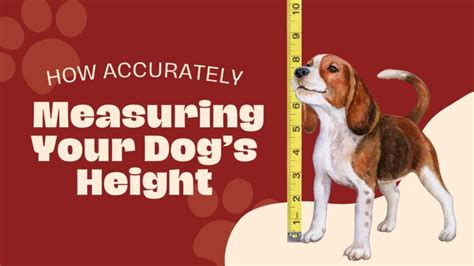Introduction

Providing your furry companion with a comfortable and supportive bed is essential for their well-being and well-deserved rest. However, choosing the right-sized bed requires more than just guesswork. To ensure a perfect fit, it’s crucial to measure your dog accurately. This guide will walk you through step-by-step instructions on how to measure your dog for a bed, considering various factors that influence their sleeping habits and preferences.
Step 1: Determine Your Dog’s Sleeping Style
Before measuring your dog for a bed, observe their sleeping habits to determine their preferred sleeping position. This will influence the shape and size of the bed you need.
- Curled Up Sleepers: Dogs that curl up into a ball often prefer a smaller, donut-shaped bed or a bed with a raised rim for extra support.
- Stretched Out Sleepers: Dogs that stretch out and sprawl while sleeping require a larger bed that provides ample space for their full-body length.
- Side Sleepers: Side sleepers favor beds that offer support to their necks and heads. Consider choosing a bed with a pillow or bolster for extra comfort.
Step 2: Measure Your Dog’s Length
The first measurement you need is your dog’s length from nose to tail.
- Have your dog stand up and face forward.
- Use a measuring tape or a piece of string to measure from the tip of their nose to the base of their tail.
- Add 4 to 6 inches to the measurement for a comfortable sleeping space.
Step 3: Measure Your Dog’s Height
Next, you need to determine your dog’s height to ensure they can comfortably enter and exit the bed.
- Have your dog stand up on all fours.
- Measure from the top of their head to the ground at their withers (the highest point of their shoulder blades).
- Add 2 to 3 inches to the measurement for a buffer zone.
Step 4: Consider Your Dog’s Weight and Joint Health
Your dog’s weight and any joint issues they may have should also be taken into account.
- For dogs over 50 pounds, choose a bed with extra support to accommodate their weight.
- Dogs with joint pain or mobility issues may need a bed with a memory foam base or orthopedic support.
Choosing the Right-Sized Bed
Once you have all the measurements, use the following table to determine the appropriate bed size for your dog:
| Dog Length | Dog Height | Recommended Bed Size |
|---|---|---|
| Under 22 inches | Under 14 inches | Small (24-30 inches) |
| 22-26 inches | 14-18 inches | Medium (30-36 inches) |
| 26-30 inches | 18-22 inches | Large (36-42 inches) |
| Over 30 inches | Over 22 inches | Extra Large (42 inches or larger) |
Additional Considerations
In addition to the measurements, consider the following factors when choosing a bed for your dog:
- Material: Choose a material that is durable and easy to clean, especially if your dog is prone to accidents or shedding.
- Shape: Consider the shape of your dog’s body and their sleeping style when selecting the bed shape.
- Features: Some beds come with features like raised rims, orthopedic support, or cooling fabrics. Choose features that align with your dog’s needs.
Reviews
“I used this guide to measure my dog for a bed, and it fits him perfectly! He loves curling up in it and sleeps soundly all night.” – Sarah J.
“My dog has joint pain, and this bed provides him with the extra support he needs. Thank you for the detailed guide!” – Mark B.
“I have a large breed dog, and I appreciate the guidance on choosing a bed for his size. The bed I purchased is spacious and comfortable for him.” – Emily K.
“This guide was incredibly helpful in helping me choose the right bed for my dog. She’s now sleeping more peacefully than ever.” – Jessica L.
Conclusion
Measuring your dog for a bed may seem like a simple task, but it’s essential to ensure their comfort and well-being. By following the detailed steps outlined in this guide, you can determine the appropriate bed size and consider additional factors that influence your dog’s sleep. With a perfectly sized and comfortable bed, your furry friend can enjoy restful and rejuvenating nights of sleep for years to come.





















